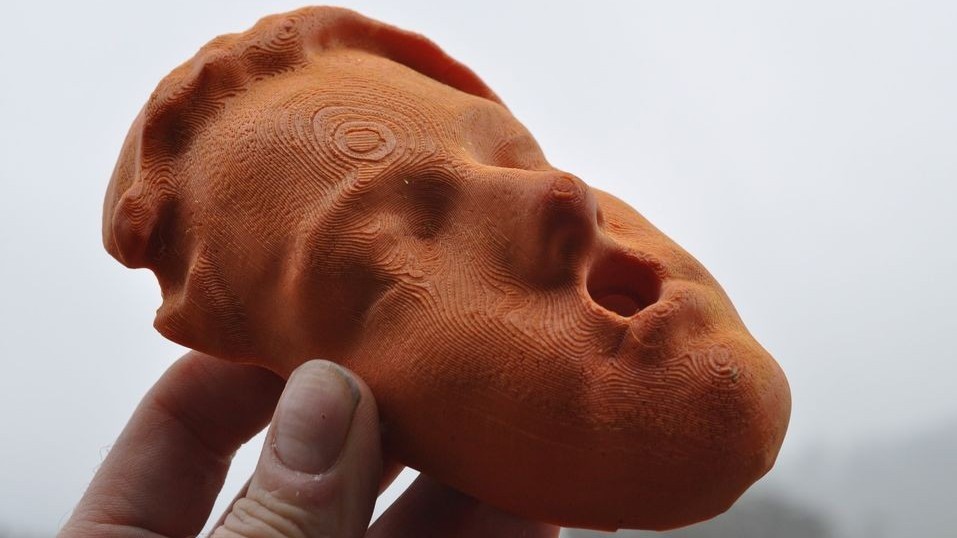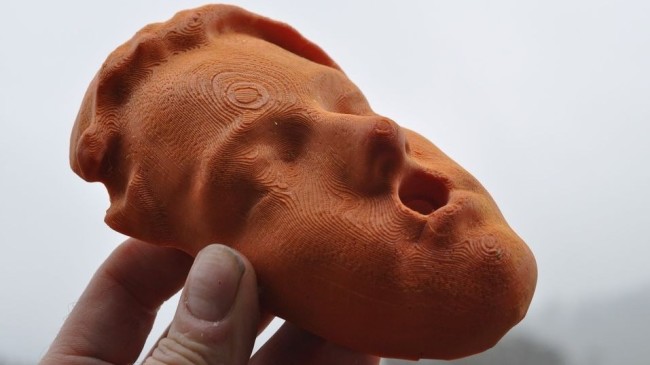
3D printing technology has long been a dream for climbing hold makers. They’ve wondered if using these printers — which are able to synthesize a three-dimensional object from a digital file by “printing” successive layers of material according to precise computer controls — would allow them to produce more intricate holds at a lower cost. But the cost of 3D printers, the physical properties of the “ink” they use, the time it takes to print just one hold, and the challenge of learning how to design shapes on a computer, has put the reality of printing urethane grips out of reach of most hold producers.
But within the DIY 3D printing world, one maker is proving that the concept is feasible, if still a bit futuristic. Whitney Potter, a forty-six year old 3D printing expert, as well as a copper and blacksmith, from Sebastopol, California, is one of the hosts of the “3d Printing Today Podcast“. Potter has also been called an Instructables Renaissance man for his step-by-step instructions for making 3D printed objects, including climbing holds.
Potter is an avid climber and recently built a home woody for himself and his kids to train and play on. Being a DIY’er, Potter thought he could use his 3D printer to make the hundreds of holds he would need to fill the woody. Because of the small, plastic nature of climbing holds, “They are an ideal application for 3D printing,” he said during a recent podcast.
But he quickly learned that the typical materials and processes used in 3D printing would not work to make a climbing hold that was strong enough to support body weight.
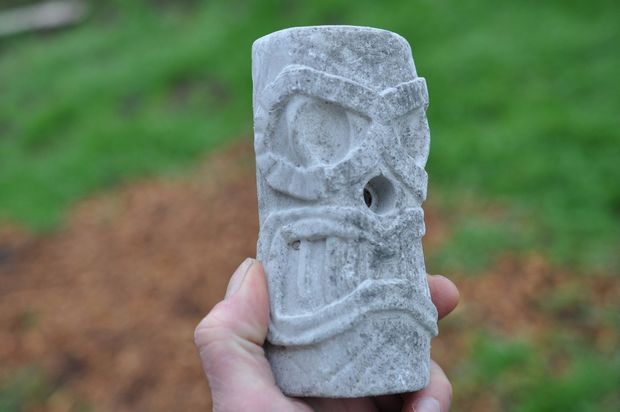
Potter’s first attempt resulted in a weak, brittle hold that was cast in high strength fiberglass-reinforced-concrete. “3D printed parts can be weak, especially when stressed across the layer lines,” the maker explained to 3Ders.org. He added, “They can be made stronger by making them denser up to the point that they are 100% solid, but this adds dramatically to the cost and print time. A fist sized climbing hold printed at 100% infill would take between 12 and 24 hours to print.”
Even for a DIY project, that is a lot of time devoted to producing a product that is going to be twice as expensive as professionally made climbing holds.
The Mold, Not The Hold
After conducting a bit of research into professional methods of climbing hold manufacturing, Potter learned that holds are typically made from polyurethane resin, cast in a silicone rubber mold. To get that mold experienced shapers spend countless hours hand-sculpting foam into one of an infinite number of designs.
He moved on from thinking about printing holds to printing a “master” and from that master making a mold. “I thought, well, I can print a master. It’s just a regular print, it doesn’t have to be solid or anything [special]. And then you can cast a silicone mold off of it,” Potter said in his podcast.
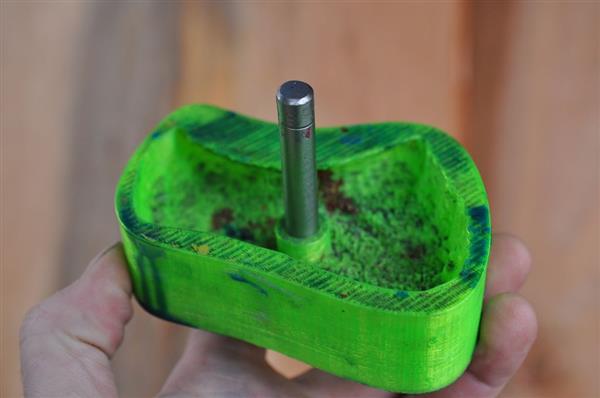
Though it’s possible to 3D print using silicone, it is quite expensive and since a mold needs to completely cover the master it requires a fair bit of material. This approach works well for large pour houses because they can pull hundreds of casts from a single mold, so the cost of making a master is more reasonable.
On the flip side, 3d “ink” is also expensive and most machines use plastic filament which costs a minimum of $20-30 per kilo. So Potter was looking at $5-$10 per hold to try to print something which probably won’t work and may not be strong enough if it does. Given that a climbing wall requires hundreds of holds this was beginning to look like a real non-starter for Potter.
He quickly realized he could simply skip this step of making a master and print the mold itself in thermoplastic polyurethane (TPU), an extremely flexible 3D printing filament. While not nearly as flexible as silicone, TPU is flexible enough that parts can be de-molded once they have cured.
“I wanted to make enough holds for a whole climbing wall, but it would be rather boring if they were all identical. Silicone molds would be rather expensive if I only used each one a few times,” Potter wrote on his Instructable page outlining the process he developed.
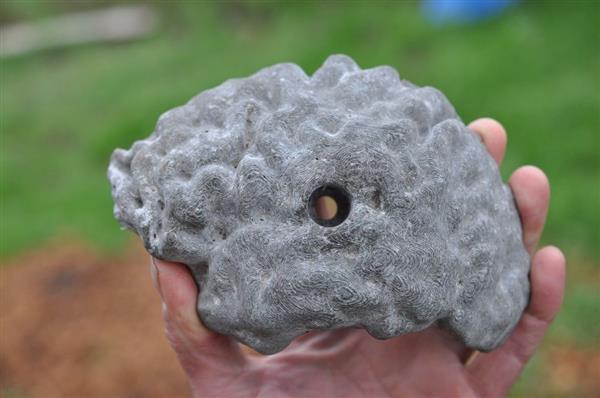
Although less durable and not as easy to use as silicone, the TPU mold offers several advantages: “In a couple of hours I can print a mold that will produce dozens of copies of a hold,” Potter explained. “The cost of the TPU mold is maybe a dollar which is much better than $10-$20 for a silicone mold.” These shortcomings are more than made up for by the economy and convenience of printing the mold directly.
After Potter printed the mold he then used a two-part polyurethane product called RC-3 from Alumilite, which is a company specializing in mold and casting equipment and products. And with the help of a little mold release he ended up with a functional, although perhaps slightly ugly, climbing hold.
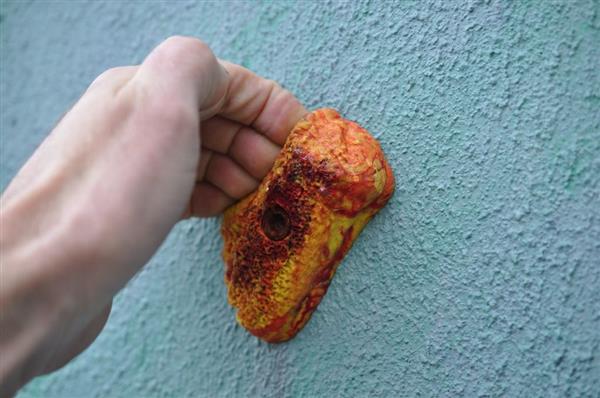
The Shape of Things To Come
To get the shapes that Potter used for his holds he used 3D scans of various items, like his daughter’s face and a CAT scan of a human brain he found on Thingiverse. He even used an exact, scaled replica of Yosemite Valley as one of his molds. Being able to use 3D scans of anything in the world could open up endless possibilities for hold makers. And if a shaper took the time to learn the art of digital design we could start to see a a whole new array of futuristic climbing holds.
The shapes that Potter finally ended up with may seem rudimentary to many shapers and climbers. But what they do show is that it is possible to use 3D printing technology to continue innovating and streamlining the climbing hold manufacturing process.
To learn more about Potter and his climbing holds, check out his two-part series on climbing holds at the 3d Printing Today Podcast:
Part 1 (the section on climbing holds starts at 49:40)
Part 2 (skip to 41:23)

Climbing Business Journal is an independent news outlet dedicated to covering the indoor climbing industry. Here you will find the latest coverage of climbing industry news, gym developments, industry best practices, risk management, climbing competitions, youth coaching and routesetting. Have an article idea? CBJ loves to hear from readers like you!




